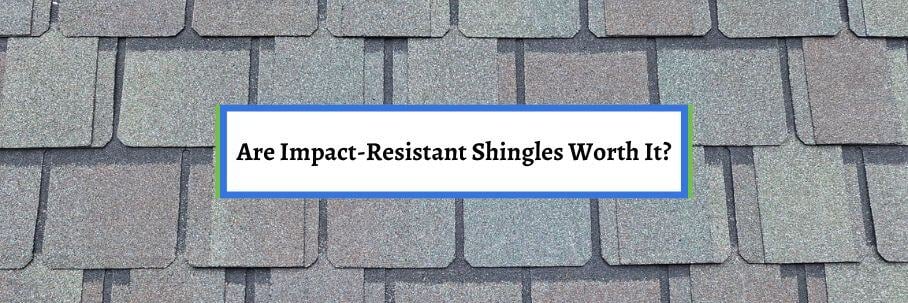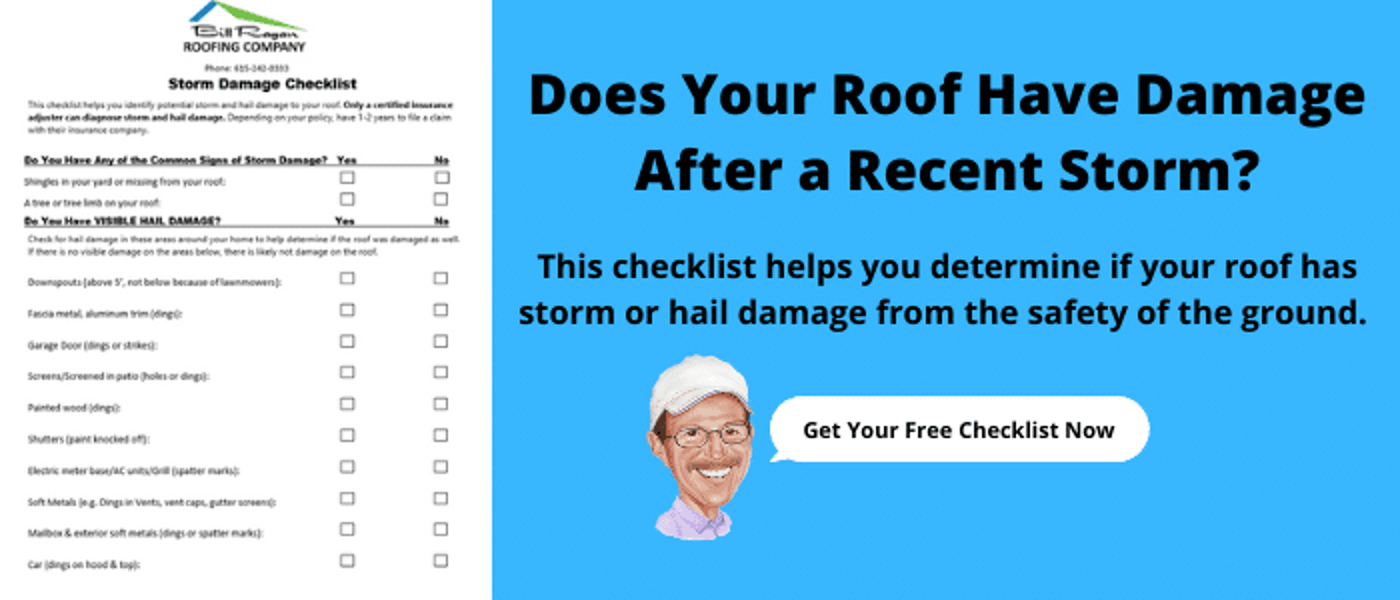Are Impact-Resistant Shingles Worth It?

Does your area get hit with hail storms? Are you considering impact-resistant shingles to avoid dealing with roof damage and filing an insurance claim?
The truth is that impact-resistant shingles have never been more popular. And it’s easy to see why with the weather producing stronger storms more frequently.
However, impact-resistant shingles aren’t necessarily worth the investment for every homeowner. So, how do you determine if they’re right for you?
For over 30 years, Bill Ragan Roofing has helped homeowners make the best decisions for their upcoming roof replacement. Now, I’ll help you fully understand impact-resistant shingles and if they’re right for you.
First, I’ll briefly explain impact resistance ratings and what class is considered “impact resistant”. After that, you’ll learn if they’re worth the investment and how to identify them.
What are the impact-resistant shingle ratings?
All shingles have some level of impact resistance, but they’re broken up into classes based on testing by Factory Mutual (FM) and Underwriters Laboratories (UL). The test has four ratings that classify a shingle's ability to withstand a steel (UL) or ice (FM) ball’s impact when dropped from 20 feet.
Below are the Classifications for both UL and FM impact ratings
- Class 1 shingles can withstand steel/ice balls that are 1.25” in diameter.
- Class 2 shingles can withstand steel/ice balls that are 1.5” in diameter.
- Class 3 shingles can withstand steel/ice balls that are 1.75” in diameter.
- Class 4 shingles can withstand steel/ice balls that are 2” in diameter.
Just know the tests can’t 100% replicate shingle performance due to factors like temperature, shingle age, the angle, and more when the hailstorm hits your roof. However, the ratings are universally recognized by shingle manufacturers, insurance companies, and roofers.
What are impact-resistant shingles?
As I just said, all asphalt shingles have an impact-resistant class rating. However, a true impact-resistant shingle has a class 4 rating.
 (CertainTeed Belmont IR luxury asphalt shingles)
(CertainTeed Belmont IR luxury asphalt shingles)
So, any shingle must be able to handle the impact of a 2” steel or ice ball dropped from 20 feet to qualify for the Class 4 rating and be considered impact-resistant. Shingles that classify as Class 4 are specifically made to be impact-resistant during manufacturing.
Some manufacturers add a polymer-modified mesh that prevents splitting when hit, while others add more flexibility with a rubber-type polymer (like styrene-butadiene-styrene aka SBS) so hail bounces off instead of absorbing the impact. However, some impact-resistant shingles just have extra and/or thicker layers.
No matter how they’re made, a shingle must have a Class 4 rating to be considered an impact-resistant shingle.
Are impact-resistant shingles worth it?
Some areas require Class 4 impact-resistant shingles on new roofs per local building codes. So, you may not have a choice to decide if they’re worth it.
But if there are no area requirements, Class 4 impact-resistant asphalt shingles are well worth the investment. However, it really depends on the circumstances of every individual homeowner.
The best way to determine if impact-resistant shingles are worth it is by asking yourself some simple questions.
Do I live in an area with frequent hail storms?
Hail damage during storms is becoming more frequent across the United States. So, the very first thing to consider is how often your area is hit with hail storms and extreme weather in general.
But if you do, impact-resistant shingles are worth it to avoid worrying about roof damage, filing an insurance claim, and door knockers when the storm hits. They also have high wind ratings, so they’re extremely valuable in areas with frequent strong storms.
On the other hand, you simply need to determine if the added durability is worth the increased cost if storm damage isn’t a big worry where you live. Just remember to look up your local codes to figure out if your area requires Class 4 impact-resistant shingles.
What does my insurance company say about impact-resistant shingles?
Next, learn if your insurance company offers or thinks about impact-resistant shingles. Some insurance companies offer discounts or lower premiums on roofs with Class 4 impact-resistant shingles.
This is mainly due to their superior storm damage durability, but they also meet other high-quality standards that make them longer lasting. Unfortunately, insurance companies are considering big changes to roof coverage due to the crazy amount of claims recently.
Just like building codes, some policies require Class 4 impact-resistant shingles to get or renew current coverage in certain areas. Some insurance companies are even trying to exclude roofing coverage altogether in storm prone areas.
So, talk to your agent about potential upcoming changes and how getting Class 4 impact-resistant shingles affects your policy.
Do I have the budget for impact-resistant shingles?
If your area or insurance doesn’t require impact-resistant shingles, the biggest thing to consider is your budget. They can be anywhere from 10% to 30% more expensive than the standard variation.
They’re well worth the investment for their added durability, longer lifespan, and insurance discounts. However, I don’t recommend going beyond your means just to afford impact-resistant shingles.
How do you identify impact-resistant shingles?
At this point, you should have a good idea of whether impact-resistant shingles are worth the investment. Manufacturers make impact-resistant architectural and luxury shingles, but they’re usually a different variation of the standard lines.
So, you need to know how to identify them when looking at manufacturer websites or product lines. The simplest way to identify impact-resistant options from the regular line of shingles is to look for something added to the name.
It’s easy to identify when IR (short for Impact Resistant) is in the name, but it’s more common to see a registered or trademarked name added. See the infographic below to see this in action.

I don’t expect you to know how to spot it by name alone, plus it's considered a standard benefit in some luxury shingle options. If you want to be 100% sure it’s an impact-resistant shingle, look for the classification “UL 2218 Class 4 Impact Rated”.
The good thing is that a Class 4 rating is one of the first things mentioned in the shingle description, so you shouldn’t have to go looking far. However, you’ll have to look at the data sheet and/or technical specifications if it’s not clear.
What are the best impact-resistant shingles?
After reading this article, you should have a good idea if impact-resistant shingles are worth it. As long as you ask yourself the questions we touched on, I’m confident you’ll make the right decision.
But remember, it may be required in your area for insurance coverage or per local codes. So, do more research, talk to your insurance company, and ask a local roofer for more details.
Whether they’re required or you just want them, the good thing is that you have plenty of options. However, some stand out above the rest.
That’s why I wrote another article breaking down the best impact-resistant shingles on the market today.
Check out The 5 Best Class 4 Impact-Resistant Shingles to learn the top shingles with a Class 4 impact rating.


